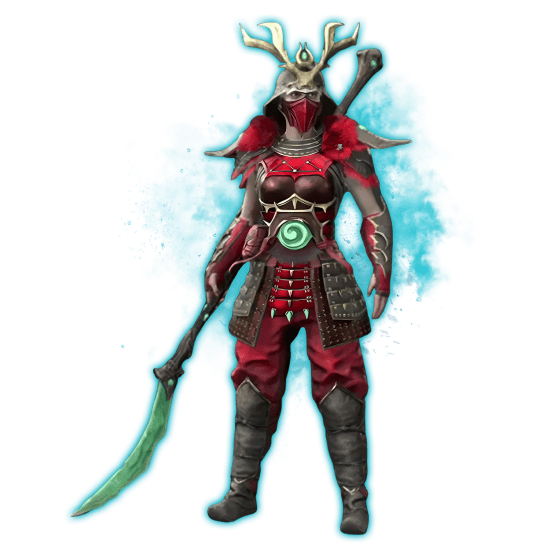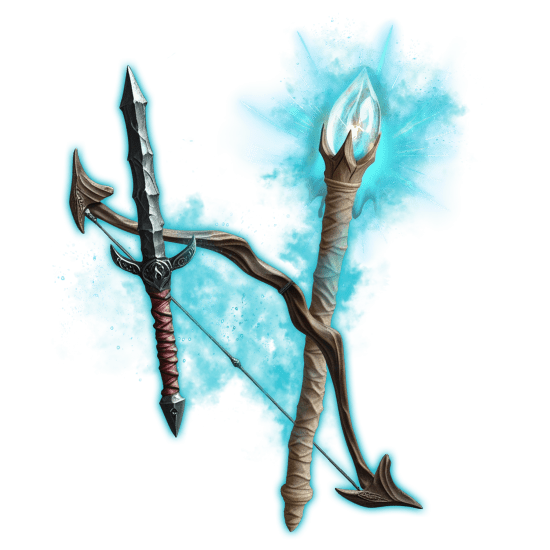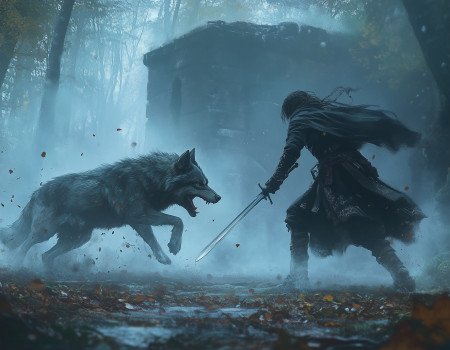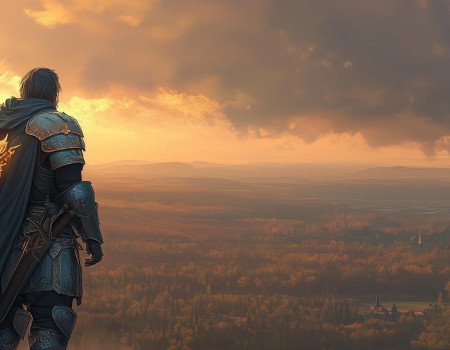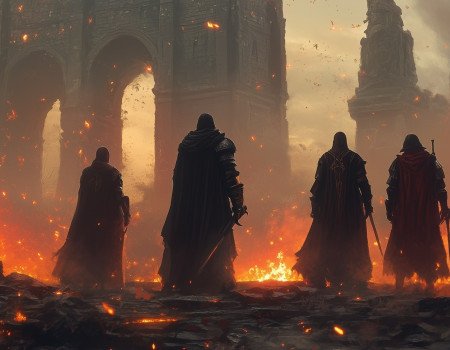Welcome to your all-in-one Ashes of Creation beginner guide 2025. If you’re jumping in during Alpha-2 Phase 3, this guide is built just for you. Whether you're brand new to the MMO genre or just curious about how this game plays differently from others, everything here is designed to help you ease into the world of Verra without feeling overwhelmed. From picking your class to understanding the world-shaping Node system, we’re covering all the fundamentals — with a focus on what’s actually playable (and coming soon) during this phase. So if you’re ready to shape, defend, or burn down a world, let’s get started.
Ready to skip the grind and jump straight into the action? Let our PROs handle the leveling in Ashes of Creation for you. We guarantee the fastest service and the best prices to get you where you want to be — hassle-free.
Note: At Skycoach, you can Buy Ashes of Creation Boost at the best prices with fast delivery. Use our special PROMO CODE (in green) hidden in this article for a 20% DISCOUNT.
What is Ashes of Creation?
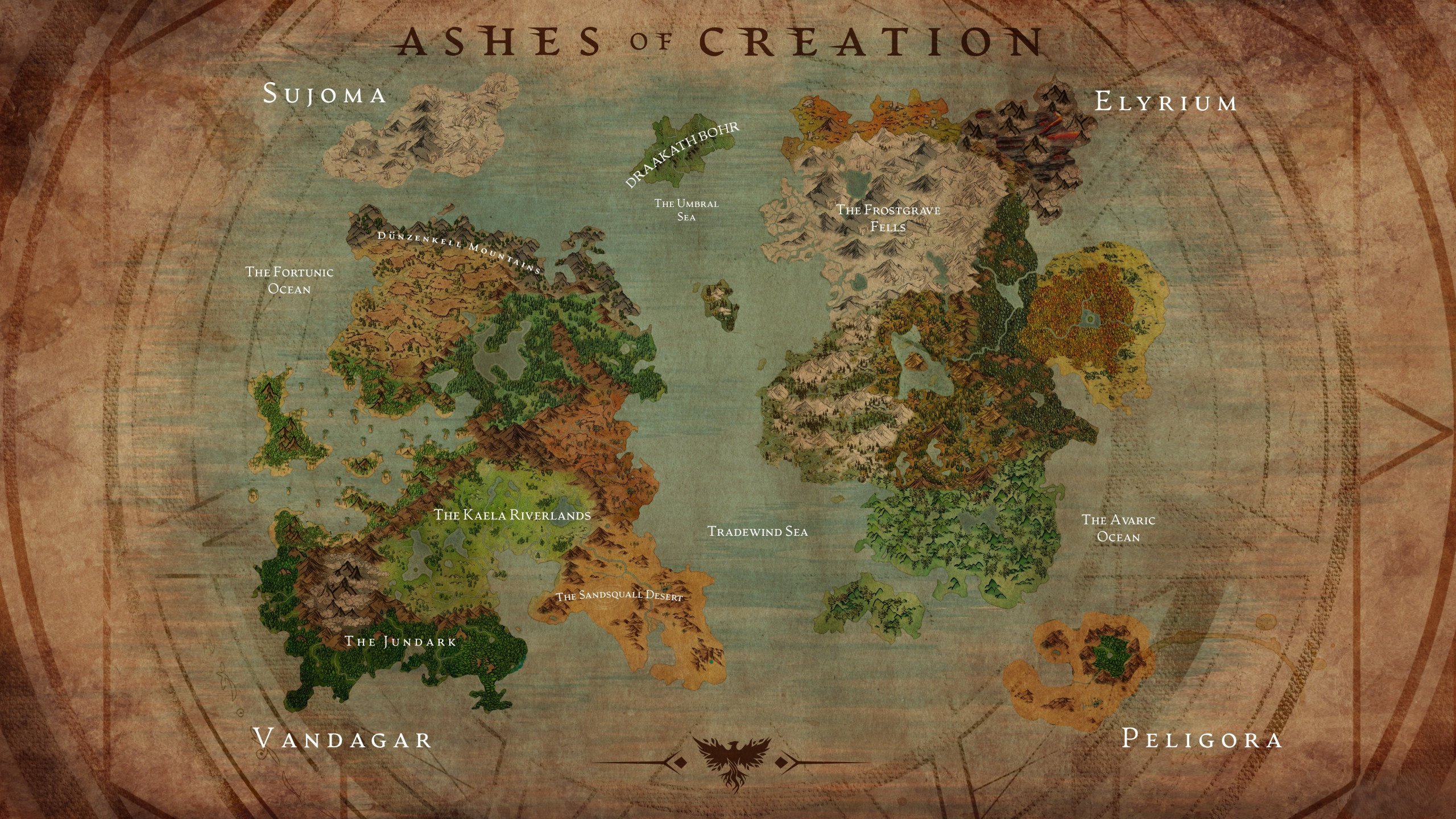
Ashes of Creation is a massively multiplayer online role-playing game (MMORPG), but it doesn't follow the same rulebook most MMOs use. It’s not a theme park where everything is pre-scripted and players ride the rails. And it’s not quite a sandbox either, where the world is empty and up to you to fill with meaning. Instead, it lives somewhere in between — a blend of systems, choices, and consequences the developers call a “theme box.” In this world, you’ll explore, build, fight, and trade like in any fantasy MMO, but the world itself changes in response to player actions. Entire cities can rise, fall, or shift focus depending on what the player community does.
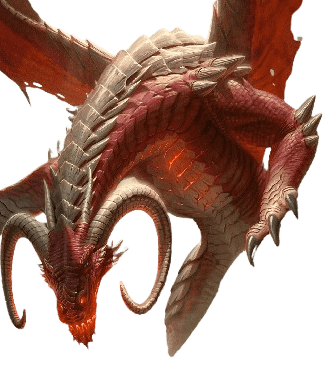 You’ll be stepping into the world of Verra, a magical land that was once devastated and abandoned, now being reclaimed by your character and thousands of others. What makes this game unique is that Verra doesn’t come with pre-built cities, dungeon hubs, or regions locked behind level gates. Instead, the world begins mostly undeveloped, and it’s up to you and other players to shape what the map looks like. Which towns exist? Who runs them? What resources are available? What threats appear? It all depends on what you build, where you travel, and who you support (or destroy). While there’s very little of an actual in-game Ashes of Creation tutorial, and new player experience is pretty much none existent, the basics are still there - leveling, questing, all that jazz.
You’ll be stepping into the world of Verra, a magical land that was once devastated and abandoned, now being reclaimed by your character and thousands of others. What makes this game unique is that Verra doesn’t come with pre-built cities, dungeon hubs, or regions locked behind level gates. Instead, the world begins mostly undeveloped, and it’s up to you and other players to shape what the map looks like. Which towns exist? Who runs them? What resources are available? What threats appear? It all depends on what you build, where you travel, and who you support (or destroy). While there’s very little of an actual in-game Ashes of Creation tutorial, and new player experience is pretty much none existent, the basics are still there - leveling, questing, all that jazz.
Ashes is also designed as a PvX game, meaning both PvE (like quests, dungeons, and crafting) and PvP (like sieges, wars, and bounty hunting) are fully integrated into the core experience. These systems don’t just coexist — they feed into each other. PvE builds up the world, and PvP can break it down. If you're someone who usually sticks to one side or the other, don’t worry — the game makes room for all playstyles, and you’ll naturally gravitate toward the activities that suit you best.
Unlike a lot of other MMOs, Ashes doesn't rely on static content. Every server will look different over time. Cities will pop up in different places, run by different mayors. Dungeons may or may not appear depending on local activity. World bosses could remain asleep forever — or be unleashed by player progress. It’s a constantly evolving world that never quite plays the same twice.
How To Start Playing?
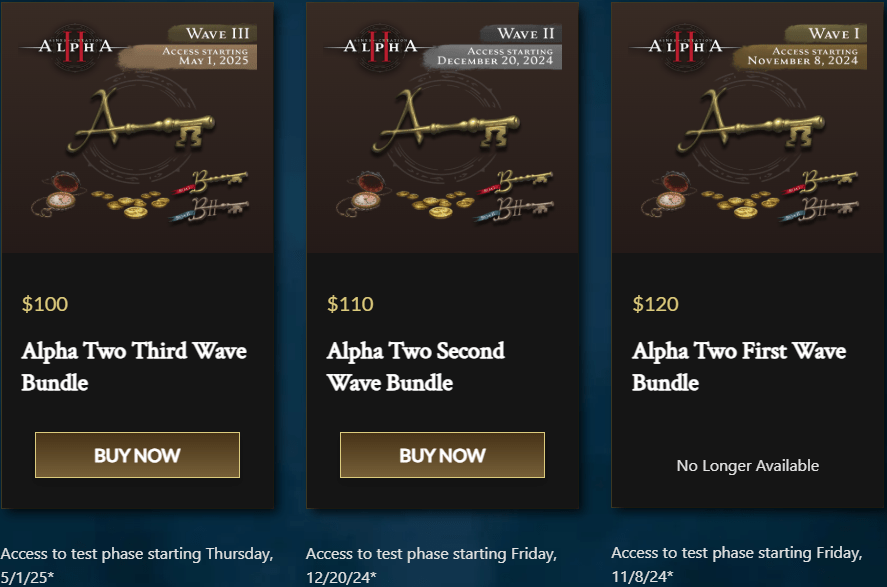
Here’s how to play Ashes of Creation during its Alpha Two testing phase:
- Buy an Alpha Two Access Pack – Head to the Ashes of Creation shop and purchase an Alpha Two bundle. The Third Wave bundle ($100) is currently available and grants access starting May 1, 2025. Each pack includes Alpha Two access, future beta access, one month of game time, and $15 in in-game currency (no pay-to-win). BLOG20
- Create an Account – Sign up or log into your account on the official Ashes of Creation website.
- Download the Game Launcher – Once your testing phase begins, a download button will appear on your dashboard. Use it to download and install the Ashes of Creation launcher.
- Install and Play – Open the launcher, log in, and you’ll be ready to begin your journey in Verra.
Keep in mind that Alpha Two is an unfinished version of the game—bugs, performance issues, and missing features are expected. Your feedback will help shape development leading into beta and full release.
What Is Ashes of Creation Alpha-2 Phase 3 (DELAYED!)
!!! The release of Phase 3 has been postponed until August 4, 2025 !!!
A big emphasis of this Ashes of Creation starter guide is the content that you’ll be able to try out during the latest major update. While we wish we could talk about everything planned for the game, at this stage there’s not much sense in doing so, since stuff might end up not appearing in the game while already existing systems and mechanics could receive a major rework, which already happened a few times.
Alpha-2 Phase 3 is where Ashes of Creation really starts to feel like a persistent, playable game. If you’re joining now, you’re coming in during the final stretch of Alpha testing — and that comes with some big advantages. For starters, the game is now online 24/7, so there are no more short testing windows or weekend-only access. You can log in anytime and start progressing without worrying about whether the servers will be shut off the next day.
One of the most important things about this phase is persistence. Earlier alpha phases were all about testing systems, collecting data, and running stress tests — which meant regular wipes that erased progress. In Phase 3, the goal is to minimize or completely avoid wipes, allowing players to treat this experience as a soft entry into the full game. While wipes are still technically possible (especially if a major bug hits), they’re no longer expected to be part of the regular cycle.
You can also expect a much smoother experience overall. By this point, most of the core systems have been implemented or are being rolled out during the phase. That includes a working Node system, guild features, castle sieges, the addition of new races and the Summoner archetype, plus new weapons, mounts, zones, and dungeons. You won’t get everything all at once — some features like naval combat and the full augment system will arrive later in Phase 3 — but the foundation is finally solid. This is where Ashes of Creation stops being just a tech demo and starts becoming a real MMORPG.
For new players, this means it’s finally worth learning the game, picking a class, and investing time into exploring the systems. Your progress matters now, and the world is waiting to be shaped.
Ashes of Creation Class System
Creating your character in Ashes of Creation is more than picking a race and hairstyle — it’s how you lock in your combat style, role, and long-term identity in the world of Verra. Rather than giving you a single static class, Ashes lets you shape your own by combining two Archetypes: a Primary, which is permanent, and a Secondary, which can be changed later and used to modify your abilities through a system of augments. During Alpha-2 Phase 3, many of the game’s core classes, abilities, and races will become available for testing — making this the first time the broader class system is playable in a real, persistent environment.
Let’s walk through how the system works — and what parts of it you’ll actually be able to use as Phase 3 rolls out. There’ll be a separate guide dedicated to the class system as a whole, but for this Ashes of Creation beginners guide we’re going to keep things short.
Primary Archetypes (Including the Summoner)
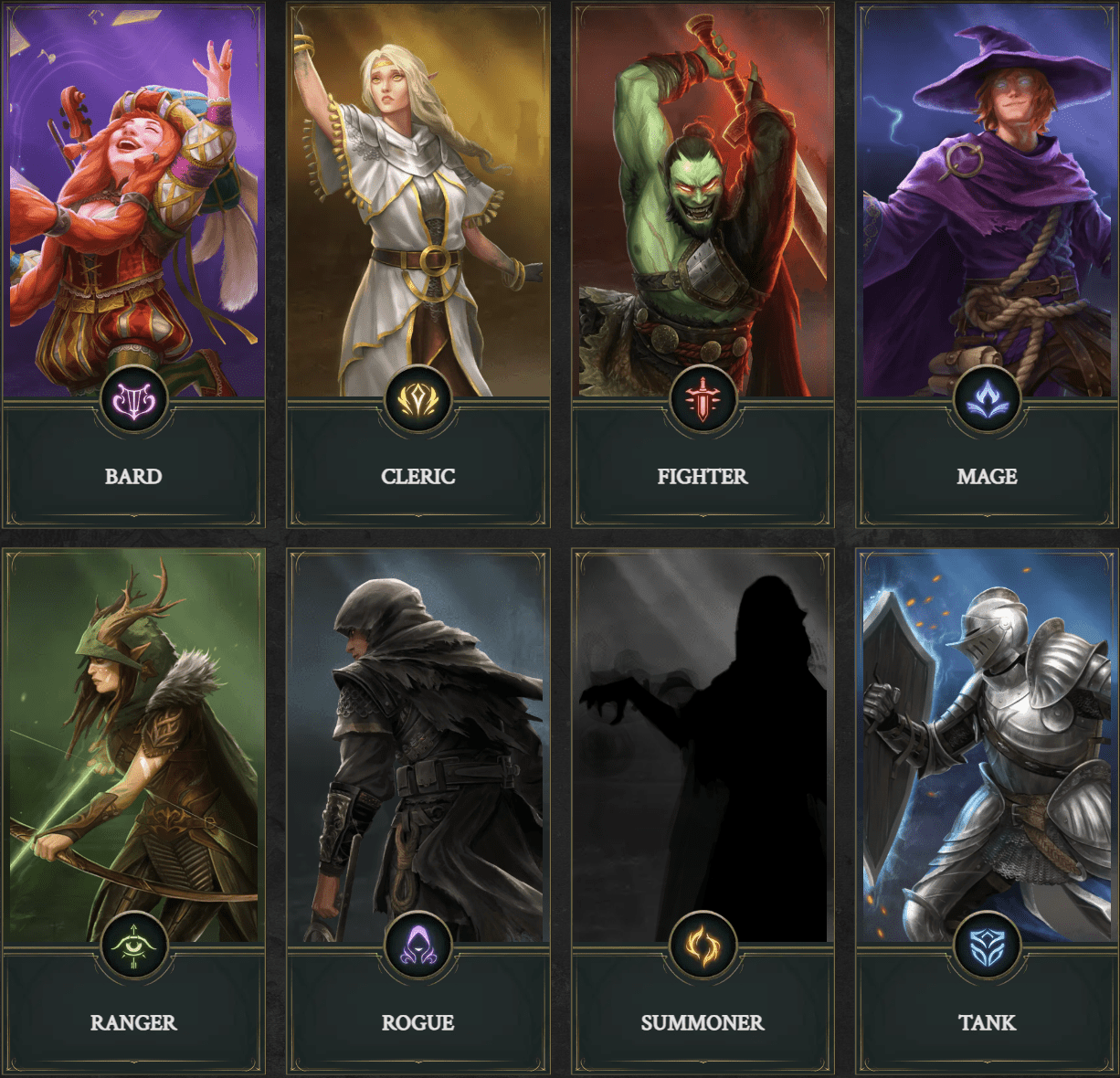
The first step in defining your class is choosing a Primary Archetype. This determines your core role in combat and gives you a full set of skills, passives, and progression options. Once selected, your Primary Archetype cannot be changed, so this decision really matters.
There are eight Archetypes planned at launch, and several of them are already available in Phase 3 — including the long-awaited Summoner, which is being introduced early in this phase. Here's a quick look at how each one plays:
| Icon | Archetype | Role | Core Identity |
| Fighter | Melee DPS | Frontline brawler with aggressive burst | |
| Tank | Main Tank | Threat generation, control, survivability | |
| Rogue | Stealth DPS | Mobility, sneak attacks, trap placement | |
| Ranger | Ranged DPS | Precision attacks, kiting, physical ranged | |
| Mage | Magic DPS | Elemental damage, AoE, big burst combos | |
| Cleric | Main Healer | Direct heals, party buffs, sustain | |
| Bard | Support Healer | Buff/debuff specialist, off-healing | |
| Summoner | Hybrid/Utility | Role-flexible caster with combat pets |
The Summoner stands out as a flexible class capable of summoning creatures that fill different roles — a tanky summon for front-lining, a healing summon for support, and so on. It won’t have every feature available right away, but even early versions offer a unique playstyle.
Abilities, Passives, and Skill Trees
Once you’ve picked your Archetype, you’ll start unlocking active abilities, passive bonuses, and points to invest into your skill tree. Ashes doesn’t give you a full set of skills all at once — instead, you’ll earn and refine them gradually. You’ll also have to make choices that define your playstyle over time.
Here’s how your character's skill system is structured:
- Active abilities are combat skills you use during fights — attacks, heals, dodges, etc.
- Passives provide behind-the-scenes bonuses — things like increased crit chance or faster mana regen.
- Skill trees allow you to specialize — you’ll spend points to improve specific skills or unlock variants of them.
Each Archetype has roughly 20+ abilities, 10+ passives, and 30+ skill nodes to play with. That’s already a solid amount of complexity, even before augments or weapons come into play. As Phase 3 progresses, you’ll likely see refinements to how these trees function, especially as more classes and weapon types go live. But as long as you know how to start AoC, most of these classes and roles should feel natural.
Secondary Archetypes and Augments
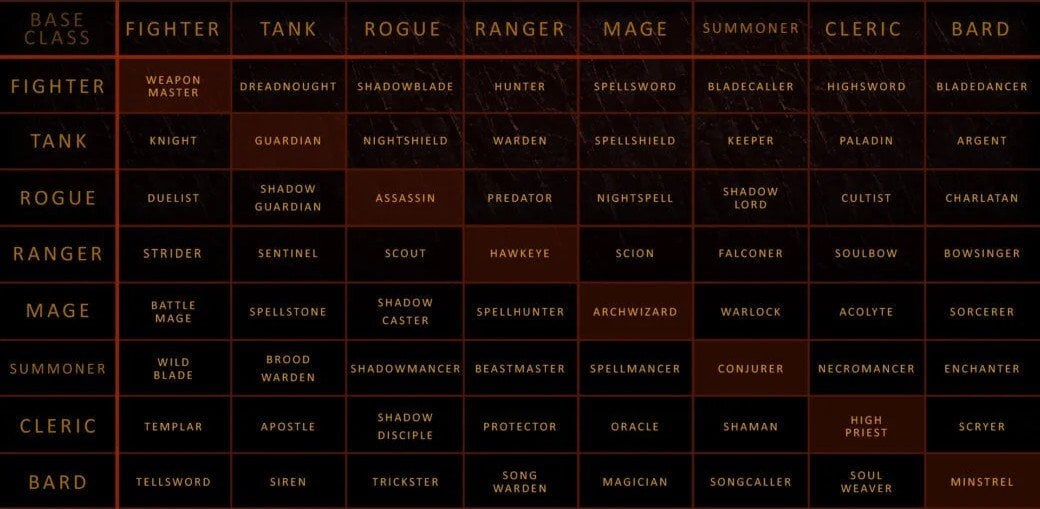
Around level 25, your character unlocks the ability to select a Secondary Archetype, which doesn’t give you new abilities directly but does unlock the augment system. Augments are modifiers that apply to your Primary skills, letting you tweak their effects based on the Secondary’s theme.
To help you get a feel for how this works, the first two Secondary Archetypes being tested in Phase 3 are Cleric and Tank. Each one offers four augment “schools” that line up with their core fantasy:
- Cleric augments: healing, purification, self-sustain, party utility
- Tank augments: defense boosts, threat modifiers, taunts, mitigation
For example, let’s say you’re playing a Mage and you choose Cleric as your Secondary. You might take your fireball and augment it to heal nearby allies for a small amount. Or maybe you’re a Rogue with a Tank Secondary — you could augment your evasive strike to briefly draw aggro or reduce incoming damage.
You’ll be able to swap your Secondary Archetype at a trainer or hub location — but not on the fly. For testing, this will likely be easier and more flexible during Phase 3 to encourage experimentation.
What Races Can I Play As?
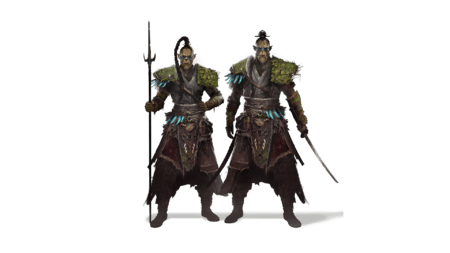 While races in Ashes of Creation don’t drastically alter your stats or restrict your class choices, they do add layers of cultural flavor, aesthetics, and lore immersion. So, for this AoC new player guide, we’re not going to be recommending best races to pick.
While races in Ashes of Creation don’t drastically alter your stats or restrict your class choices, they do add layers of cultural flavor, aesthetics, and lore immersion. So, for this AoC new player guide, we’re not going to be recommending best races to pick.
Every race has its own architectural style, NPC behaviors, racial augments, and starting locations — and when players of a certain race contribute the most to a Node’s growth, that Node physically takes on the race’s appearance and identity.
During Alpha-2 Phase 3, you’ll get access to four of the nine total races:
- Py’Rai – Forest-dwelling elves known for their connection to nature, individualism, and expression. Players will have customizable antlers as part of their look.
- Ren’Kai – Honor-driven orcs with deep ties to divine order and a disciplined code of conduct. Tall, strong, and dragon-blooded in appearance.
- Niküa – Island-dwelling dwarves who value family, freedom, and exploration. They’re lighter in tone than their cousins, the Dünir, and inspired by tropical cultures.
- Tulnar – Underground survivors formed from a mix of major and minor races left behind after the apocalypse. Tulnar are fully customizable across reptilian, mammalian, and humanoid traits.
To give you a better snapshot of how races are split across the world’s cultural roots:
| Parent Culture | Races Unlocked in Phase 3 | Not Yet Playable |
| Pyrian Elves | Py’Rai | Empyrean |
| Kaivek Orcs | Ren’Kai | Vek |
| Dünzenkell Dwarves | Niküa | Dünir |
| Mixed Legacy | Tulnar | — |
Most notably, Tulnar are a wildcard. They don’t begin in the Underrealm as many expected — they instead spawn at the Divine Gates like the others. But their culture and player options reflect their unique origin: a society forged underground, deeply diverse in both look and lore.
Remember, race doesn’t lock you into a specific build or gameplay style, but it can influence how you interact with the world — including quests, NPC reactions, and aesthetics.
Weapons and Equipment (Available in Phase 3)
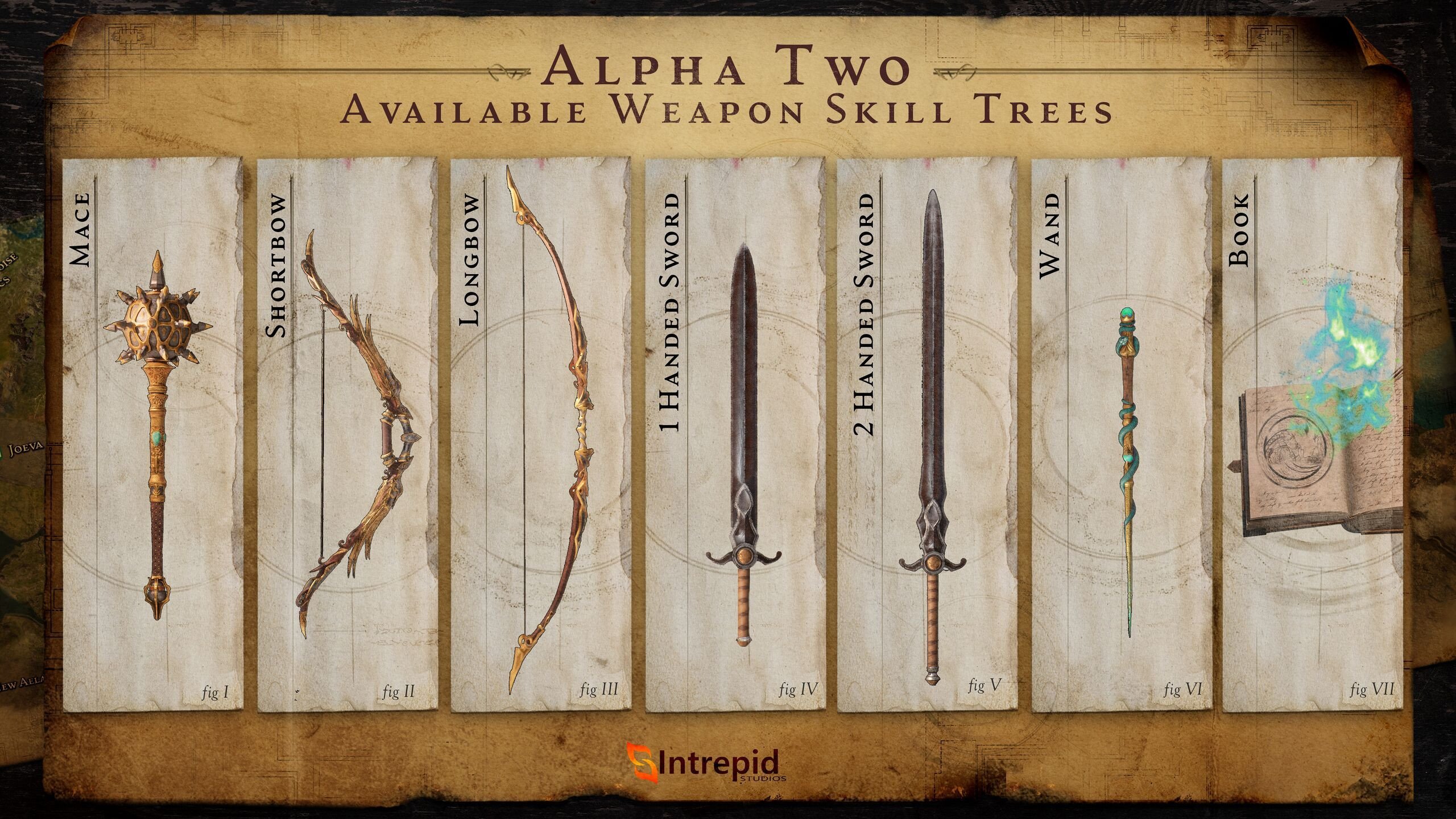
Weapons in Ashes of Creation are more than just stat sticks — they’re a central part of your identity, your fighting style, and your growth as an adventurer. During Alpha-2 Phase 3, several weapon types will become available, each with its own unique feel and function. Whether you're a caster, melee bruiser, or tactical support, the weapon you equip will significantly shape how you play.
Weapons in Ashes aren’t tied to class — but they do interact with your archetype’s abilities and passives in meaningful ways. That’s because each weapon comes with its own skill tree (yep, weapons level up too), and many abilities scale or function differently depending on what you’re holding.
Here’s a breakdown of what’s expected to be usable in Phase 3:
| Weapon Type | Ideal For | Highlights |
| Orb | Summoner, Cleric, Mage | Enhances casting, supports hybrids |
| 1H Axe | Fighter, Tank, Rogue | Fast, brutal, great for brawling |
| Piercing Sword | Rogue, Fighter | Quick, high-crit, mobile combat |
| Staff | Mage, Bard | AoE, ranged magic, elemental focus |
| (Others TBD) | To be rolled out gradually | Expect more options later |
Each of these weapons has its own rhythm. For example, bows might include a charge-up mechanic, while daggers favor fast-paced, combo-heavy strikes. The orb, on the other hand, is a more mysterious caster offhand, offering magical utility rather than raw damage.
Weapons also define your basic attack style. You’ll be able to toggle between your melee and ranged options even in combat, and some skills will auto-swap to the weapon they require when cast. Want to bash enemies with a mace and then switch to a wand to finish them off? You can absolutely do that.
On top of all that, crafted weapons matter — a lot. The materials and quality of craftsmanship heavily influence the final power and passive bonuses on any weapon. This means a sword you build from rare dungeon drops may outperform a flashy quest reward simply because you (or your guild’s master blacksmith) knew what you were doing at the forge.
Lastly, as you use weapons in combat, you’ll unlock weapon skill tree nodes that grant passive procs, status effects, or synergies with your active abilities. You might create a build where your dagger bleeds enemies, and your backstab ability gets bonus damage against bleeding targets — see where this is going?
➤ TL;DR: Weapons in Ashes are playstyle-defining tools with their own progression. Use what fits your build, experiment with trees, and expect to adapt as new gear drops during Phase 3.
The World of Verra
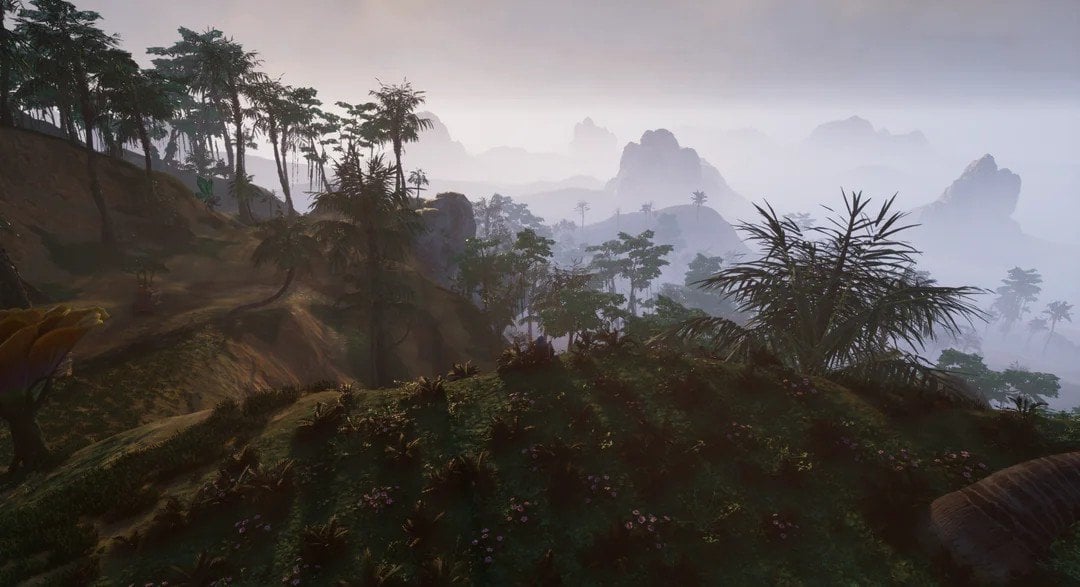
Verra is more than just a fantasy setting—it’s a dynamic, evolving world built to respond to player actions. With over 1,200 km² of explorable space, including oceans, lakes, mountains, and the mysterious Underrealm, it’s one of the most ambitious maps ever attempted in an MMORPG. Whether you're traveling through enchanted forests or blazing across volcanic plains, the environment is meant to feel alive—because it is.
This world is broken into 18+ unique biomes, each with its own climates, ecosystems, and gameplay-affecting features like weather, seasons, and resource pools. Certain skills and professions even change effectiveness based on your surroundings.
Players shape this world through the Node system, which allows settlements to rise, fall, and evolve based on where and how players interact with the land. Combine this with dynamic seasons, regional economies, and castle control, and Verra becomes a sandbox where politics, PvP, trade, and lore are all tied to the land itself.
Some quick facts about Verra:
- Total size: ~1,200 km²
- Landmass: ~450–480 km²
- Water (oceans, lakes, rivers): ~750 km²
- Travel time:
- ~50 mins N–S on mount, ~75 mins on foot
- ~5 mins from one node center to the next
- Castle regions: 5 static zones ruled by PC monarchs
- Zones of Influence (ZOI): 85 dynamic Node zones that evolve with player activity
- Starting areas: Players begin at one of the Divine Gates, with Tulnar able to start in either the Underrealm or on the surface.
From the mountaintop strongholds of the Dünir to the coral-filled islands of Sujoma, Verra is designed to constantly shift with player interaction. No two servers will look the same, and that’s entirely by design.
The Expanding Map of Verra
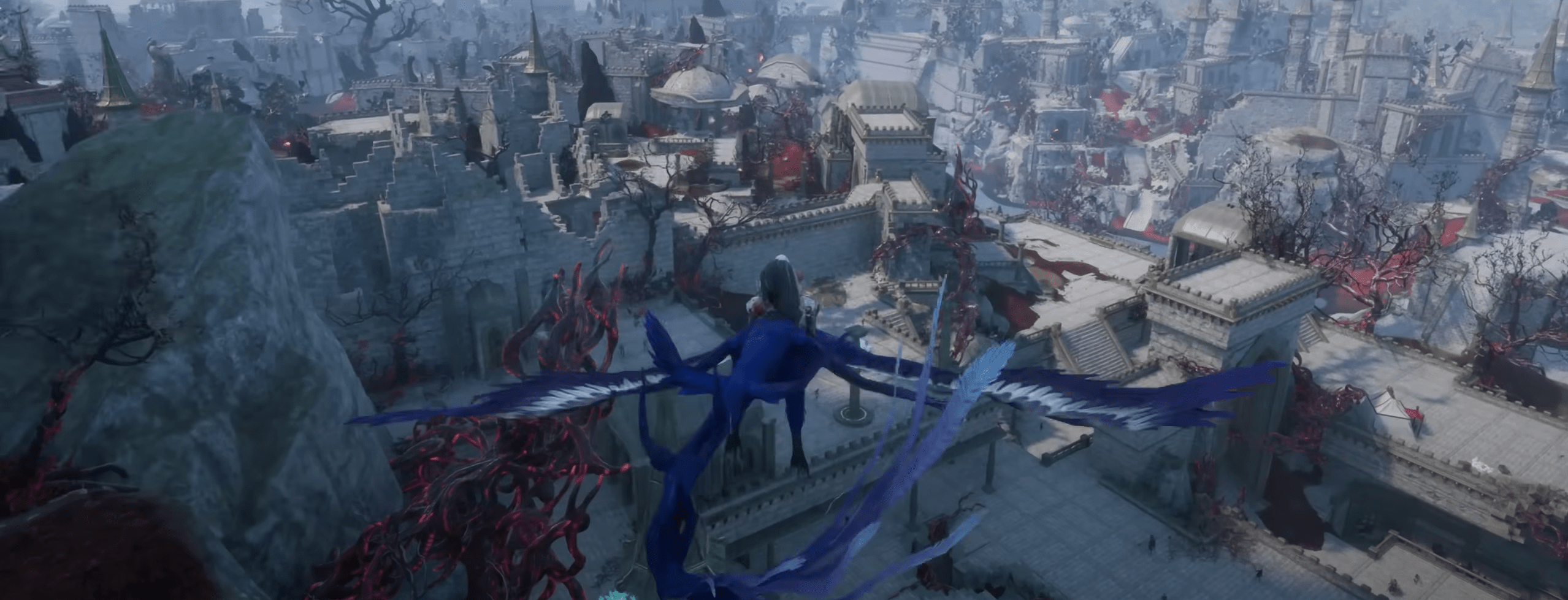
The world map is growing in Phase 3 with the addition of The Turquoise Sea and The Anvils, two visually distinct regions that offer fresh zones, nodes, and dynamic content.
The Turquoise Sea is a coastal area with island chains, fishing hubs, and future naval gameplay hooks.
The Anvils are mountainous highlands expected to challenge adventurers with rugged terrain and unique NPC factions.
Also expected to come online early-to-mid phase: the Underrealm — a vast subterranean network beneath Verra, home to hidden nodes, rare resources, and likely some very angry monsters.
💡 Bonus detail: The western continent, Vandagar, is being built during Phase 3 but won’t be fully explorable right away.
Biomes, Travel, and Exploration
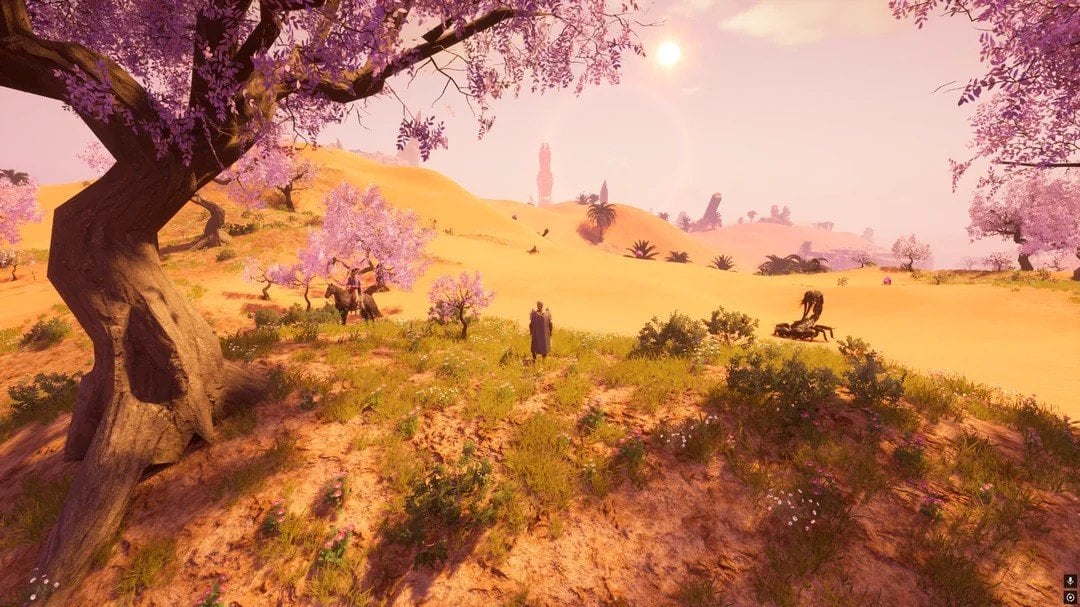
Verra is made up of 18+ distinct biomes, and each one plays differently. Deserts, forests, tundras, volcanic wastelands—you name it. Travel across these regions isn’t just about getting from point A to B—it’s a part of the adventure.
Here’s how it breaks down:
- Mounts: Get around faster, whether you're using a glider, land-based steed, or (eventually) aquatic mount.
- Caravans: Useful for hauling trade goods across the map—and defending them from ambushes.
- World Scaling: The further you go, the tougher (and more rewarding) it gets.
Verra doesn’t just encourage exploration—it demands it. Node development, dungeon locations, and even story arcs are tied to where you go and how often players show up there.
Seasonal Changes and Weather Systems
Later in Phase 3, we’ll see the rollout of seasonal systems—and these aren’t just cosmetic. The environment will actually change gameplay.
- Rivers may freeze over, opening or blocking access. BLOG20
- Different crops grow in different seasons (important for Freeholds).
- Certain enemies and quests will only appear in specific weather or seasonal conditions.
Expect this to tie into both exploration and the economy as weather and climate start to matter more.
Aquatic and Aerial Content
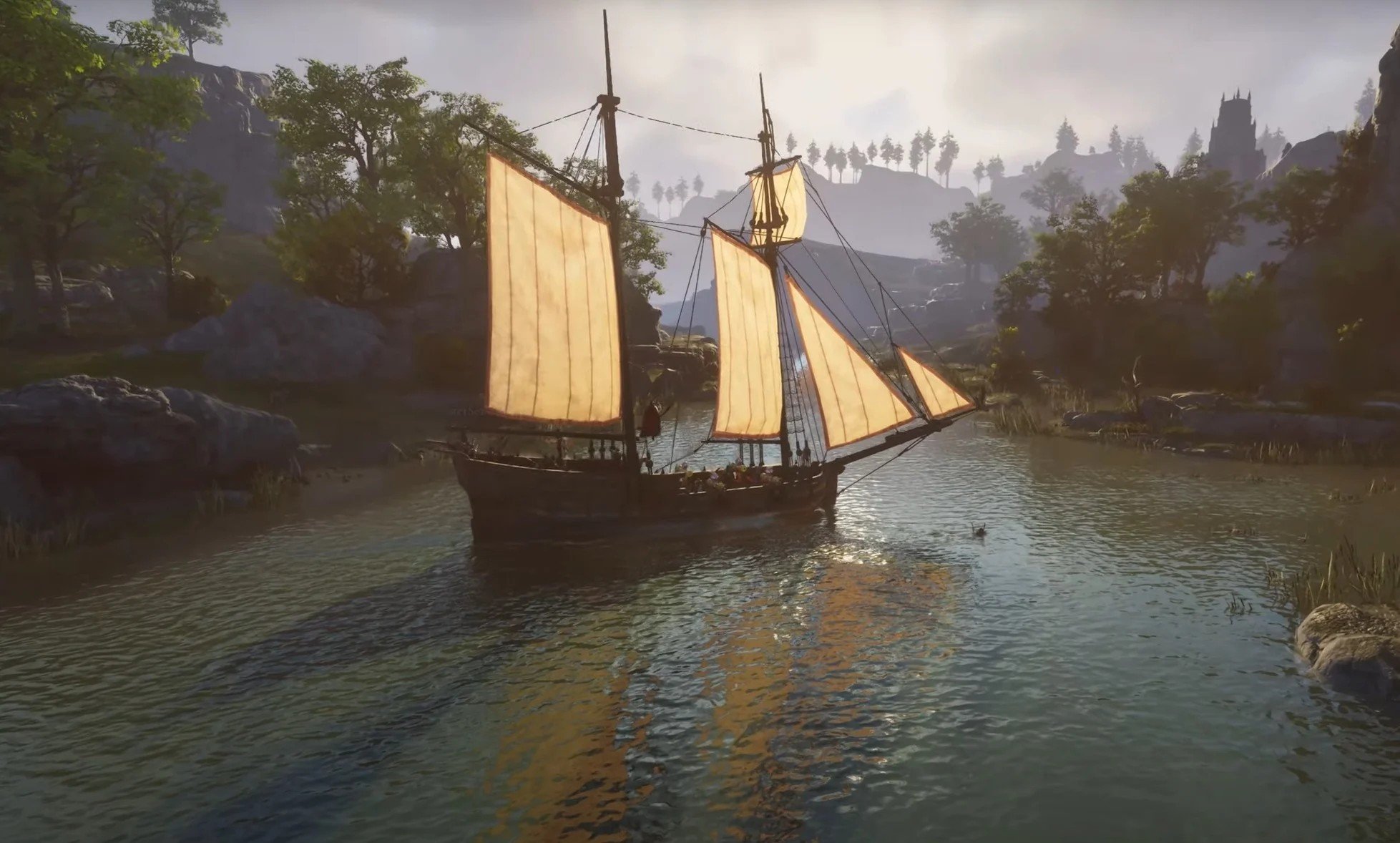
Coming in the latter half of Phase 3, players can expect to start engaging with both aquatic and aerial systems. This means:
- Underwater combat and the appearance of new ocean-based threats.
- Aquatic mounts for faster water travel. There are already mounts that move faster in the water.
- Aerial combat — yes, there will be airborne engagements, especially in PVP-heavy zones.
- The Eastern Continent is expected to show up alongside naval expansion, adding even more territory to explore.
⤷ These systems won’t all drop at once, but their rollout during Phase 3 is going to change how players interact with the map—on the ground, in the water, and eventually, in the sky.
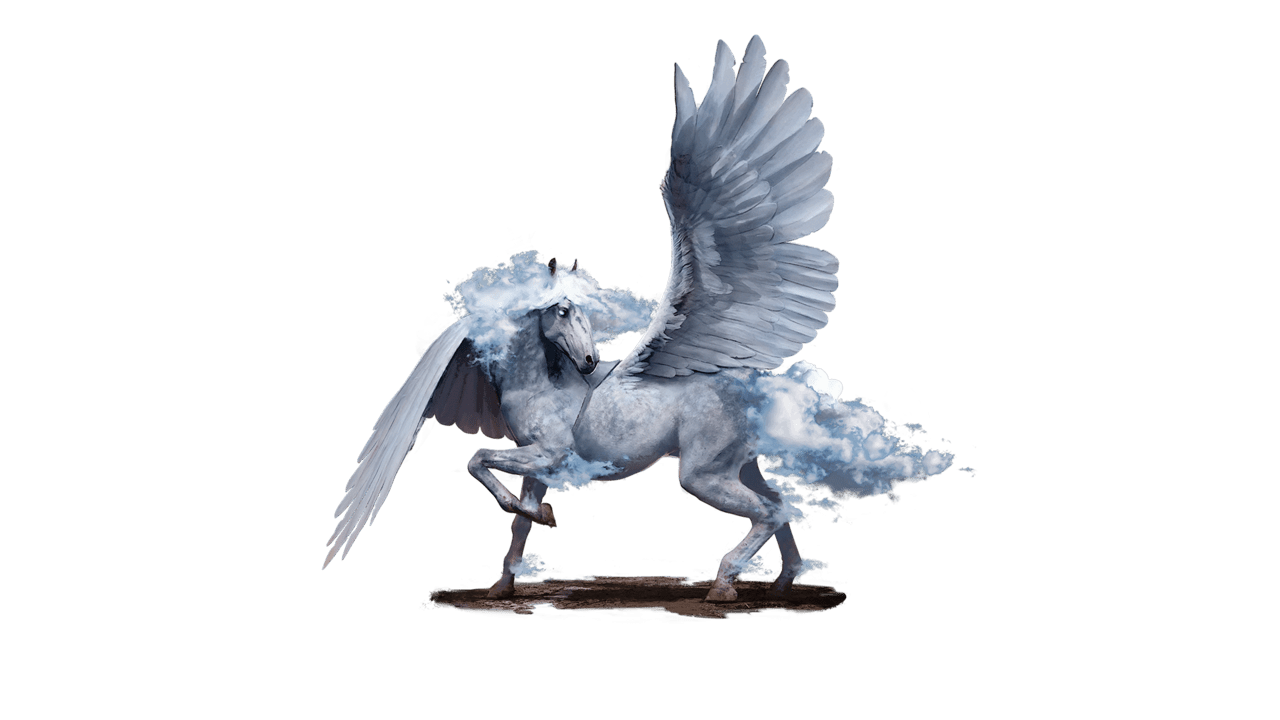
The Node System
In Ashes of Creation, Nodes are the beating heart of world progression. Everything from politics and PvP to housing and economy ties back to this system. In Alpha-2 Phase 3, the Node system really starts to come online. Players will see Nodes grow, change, and influence the world around them—offering a first real taste of how Verra is meant to evolve.
Unlike static towns or hubs in other MMOs, Nodes level up based on nearby player activity. As you gather, fight, craft, or quest, you’re feeding experience into the closest Node’s Zone of Influence (ZOI). Over time, this transforms empty land into fully functioning towns, with NPCs, services, and even local government.
Node Basics: Stages of Development
Nodes evolve through multiple stages, from humble encampments to thriving towns. In Phase 3, players will get to see early-stage development in action—up to Village stage (Stage 3).
| Icon | Stage | Description | Available in Phase 3? |
| Stage 0 | Wilderness (no Node present) | ✅ | |
| Stage 1 | Expedition: First tents, a few NPCs | ✅ | |
| Stage 2 | Camp: Visible infrastructure begins | ✅ | |
| Stage 3 | Village: Mayors, elections, more services | ✅ | |
| — | Stage 4+ | Town and beyond | ❌ (Not in Phase 3) |
At Stage 3, players can run for mayor, begin local elections, and see Nodes take on specific types based on activity—Military and Divine are the first of these to be available during Phase 3.
Zone of Influence (ZOI)
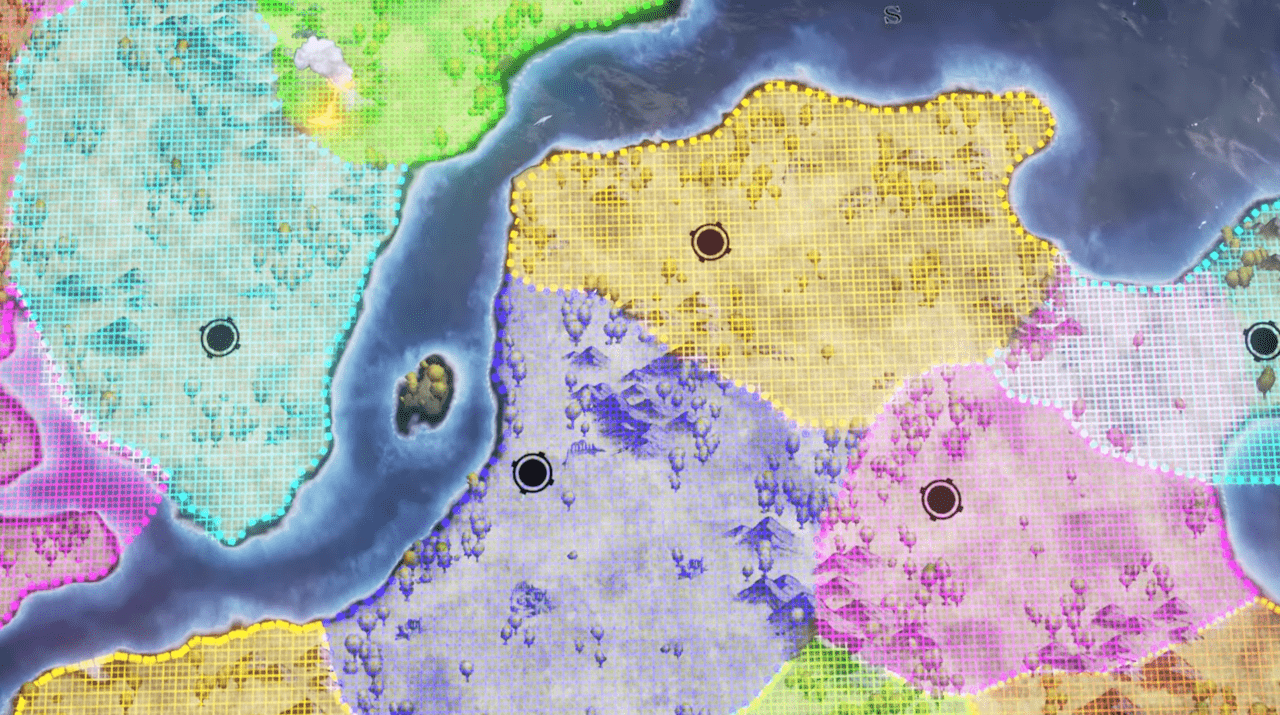
Every Node has a Zone of Influence—an area around it that tracks player activity. Everything you do inside that zone adds experience to the Node, pushing it toward the next stage of development.
Importantly, only one Node per ZOI can become active at a time. When one Node levels up, the others within its ZOI are locked out, creating strategic tension over where players put their energy.
In Phase 3, players will be able to:
- Trigger Node growth from Stage 0 to Stage 3
- Compete over which Node in a shared ZOI develops first
- Start seeing which biomes and routes become “hot zones” for growth
Here’s of the early Ashes of Creation tips and tricks: if you want to experience what town management looks like, you better find yourself a guild to join. Most of the things in the node system is a team-effort, and solo players will likely never have any effect on this side of the game.
Node Types: Military and Divine
When a Node reaches Stage 3, it becomes typed—based on the kind of XP that built it up. Two of the four total types will be available in this phase:
- Military Nodes: Developed through combat and PvP activities
- Divine Nodes: Grown through support actions and quests tied to healing, buffing, or divine tasks
Each type influences what kind of buildings, quests, and NPCs appear. For example, Military Nodes might offer combat challenges or training grounds, while Divine Nodes could provide blessings or religious structures.
Governance: Mayors, Elections, and Policies
 In Phase 3, player governance begins. When a Node hits Village stage:
In Phase 3, player governance begins. When a Node hits Village stage:
- Mayors are elected via a vote among citizens
- Mayors can set policies, such as taxation rates or development priorities
- Node Happiness (based on services, policy, and activity) begins to affect growth and productivity
- Node XP counters track what activities are contributing the most to development
Expect some light political drama—players can start to push for leadership and shape their home’s future.
Vassalship and Node Hierarchy
Parent-child Node relationships come online this phase. Here’s how it works:
- When a Node levels to Village (Stage 3), it can claim nearby smaller Nodes as Vassals
- Vassal Nodes can’t outlevel their parent
- XP earned in a Vassal Node helps the parent Node grow
- This creates a natural regional hierarchy, as stronger Nodes dominate nearby ones
This system begins to hint at the regional dynamics Ashes is known for—where every server ends up with a different political map.
Housing and Citizenship
At Stage 3, players can:
- Purchase static housing plots within the Node
- Become a citizen, giving access to local elections, services, and perks
- Register their residence for tax and gameplay bonuses
- Be taxed by the local mayor (who may or may not be your friend)
Note: Freehold housing and higher-level estate systems are not part of Phase 3.
Guilds & Social Systems
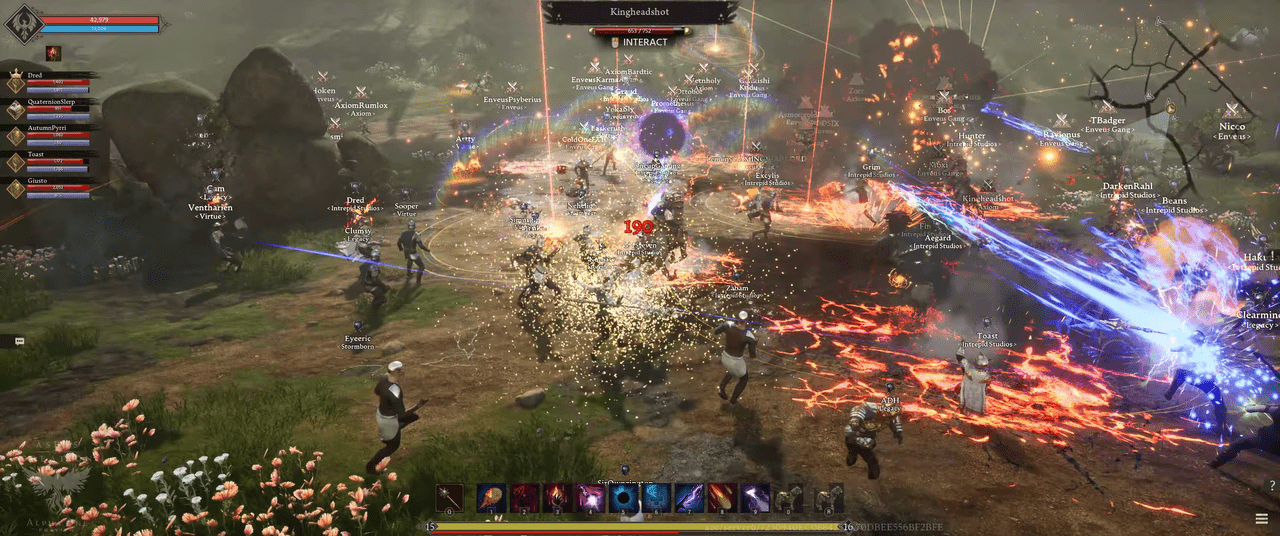
Ashes of Creation isn’t just about exploring Verra solo—your guild, your alliances, and even your in-game family play a massive role in how the world evolves around you. In Phase 3 of Alpha-2, key guild features are now online, giving players more structure, progression, and reasons to team up. While not every social feature is in yet, there's already a strong foundation for player-driven cooperation (and competition).
Guild Mechanics and Progression
Guilds in Ashes aren't just social clubs—they’re evolving power structures with meaningful gameplay impact. In Phase 3, the first stage of guild progression and perks is available. Guilds now earn experience, level up, and unlock special passive abilities.
| Feature | Available in Phase 3? | Details |
| Guild Levels | ✅ | Earn XP by completing activities like node sieges, PvE content, and PvP. |
| Skill Trees | ✅ | Choose between economic, combat, or utility perks. Trees are exclusive—your choices matter. |
| Member Cap Scaling | ✅ | Larger guilds must invest points to raise their member cap. No freebies. |
| Guild Skills | ⚠️ Partial | A few early skills are testable; expect more depth in future phases. |
Guilds must choose whether to focus on influence, trade, warfare, or utility. These decisions affect what kind of presence they have in Verra—whether that’s dominating a Node War or running the economy of a metropolis.
Guild Freeholds
Guild Freeholds are not available in Phase 3, but their systems are being prepped in the background. For now, guilds can still collaborate around shared goals, help each other develop personal freeholds, and plan for the future. Once implemented, Guild Freeholds will allow large-scale construction, utility buildings, and even buffs that benefit all members.
Alliances
 While formal alliance systems are still being held back for future phases, many guilds are already forming unofficial coalitions. The tools to manage alliances—shared chat channels, cross-guild coordination, and alliance tags—are not online yet, but you can expect them to emerge later in Alpha-2.
While formal alliance systems are still being held back for future phases, many guilds are already forming unofficial coalitions. The tools to manage alliances—shared chat channels, cross-guild coordination, and alliance tags—are not online yet, but you can expect them to emerge later in Alpha-2.
For now, cooperation is happening the old-fashioned way: through Discord, politics, and handshakes that may or may not get broken in the next Node War.
Duels, Mail, Titles, and Transmog Systems
These social and utility features are in various states of implementation:
- Duels → ✅ Functional. Challenge other players anywhere outside of safe zones.
- Mail → ❌ Not online yet.
- Titles → ✅ Some early titles are available through achievements and node contributions.
- Transmog/Appearance Slots → ⚠️ Limited appearance slot testing has started, mostly for cosmetic overrides on gear.
Phase 3 is focused more on functional systems than polish, but the foundation for deeper social gameplay is clearly being laid.
Artisan & Economic Systems
Verra’s economy is entirely player-driven—and with Phase 3 of Alpha-2, we’re getting a deeper look into how gathering, crafting, trade, and economic progression actually work in action. This phase introduces several new layers of the Artisan system, as well as highly requested features like pets and gear dyeing.
Gathering, Processing, Crafting: The Core Loop
The Artisan system is split into three pillars:
- Gathering – Harvest raw materials directly from the world.
- Processing – Refine those materials into usable components.
- Crafting – Turn refined goods into weapons, gear, consumables, and more.
Here’s one more of our Ashes of Creation tips: crafting is not essential - you can do it if you want to, but ultimately, this game is not at that stage where you can really make a fortune on crafting.
In Phase 3:
- Basic gathering tools (pickaxes, sickles, etc.) are functional.
- Resource nodes are biome-specific and visible in the open world.
- Processing stations can be used in node buildings to refine materials.
- Crafting is partially enabled, especially for basic weapons, armor, and consumables.
Each artisan profession has its own progression path. You’ll only be able to master one tree, so specialization is key—no one player can do everything.
Auction Houses & Marketplace Upgrades
The marketplace system within nodes now includes:
- Basic buying and selling of items between players.
- Local listings — markets are node-based, so there’s no global auction house.
- Economic Nodes (once developed) will offer enhanced marketplace tools and regional connections.
Expect pricing to fluctuate regionally based on supply, demand, and whether your node is being taxed into oblivion by a local monarch.
Caravans and Economic Progression
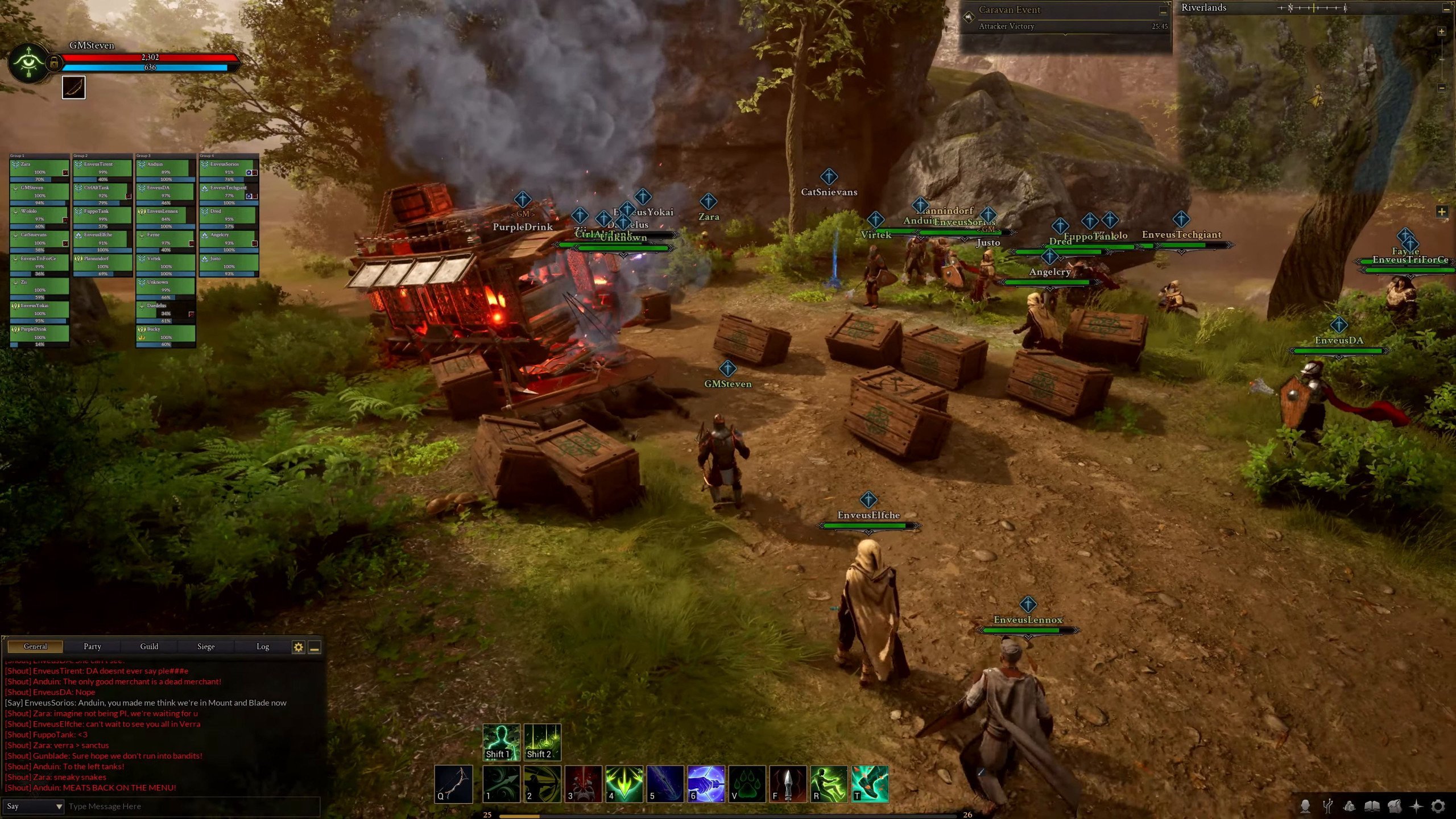
The caravan system is a major backbone of the game’s economy, and it’s now live in limited form.
In Phase 3:
- Players can launch caravans from one node to another.
- Caravans transport goods between nodes, including trade packs and raw resources.
- Caravans can be attacked by other players in transit. Defend your haul or lose it.
- Successful deliveries award gold, node XP, and artisan materials.
Caravan runs are high-risk, high-reward—and with corruption and bounty systems now in place, they’re also a perfect spark for PvP conflict.
Treasure Maps
Treasure hunting is now available in a limited test state. Players can:
- Discover treasure maps via gathering or questing.
- Follow the map to a location and dig up hidden loot.
- Expect these treasures to vary from gold to rare crafting materials.
This is a more exploratory and luck-based form of economic content that rewards keen eyes and risk-takers.
Pets and Gear Dyeing
Added in Phase 3:
- Vanity pets can now be summoned and follow you around the world.
- Gear dyeing is functional for certain armor pieces, letting players tweak their look.
- Dyes can be crafted or earned through gameplay.
- Some dyes are seasonal or region-specific, making fashion part of the economic loop.
This is just the start of gear customization, with full appearance systems and cosmetics expected to expand in future phases.
PvE Content Overview
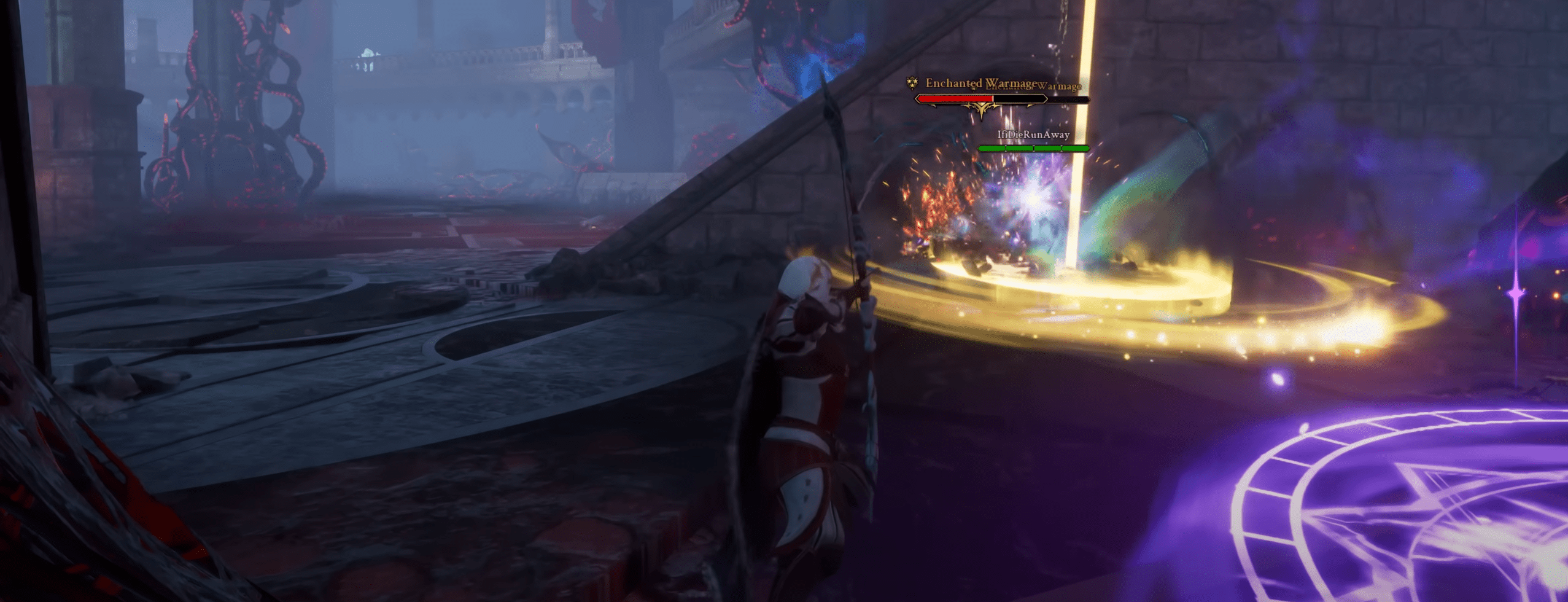
Ashes of Creation’s PvE content is designed to feel reactive and alive. Phase 3 of Alpha-2 marks a big step forward in that vision, with more quests, dungeon content, and world events tied to the Node system now in play. This isn’t just about grinding mobs—your actions shape what PvE even exists in your region.
Questing, Tasks, and Story Arcs
The questing system is in broader testing this phase, including:
- Node-specific tasks: As a node levels up, new quests become available tied to its culture, biome, and racial influence. BLOG20
- Narrative arcs: Multi-stage quest chains that reflect the story of the surrounding world and its changes.
- Task boards: Repeatable objectives such as bounty hunts, crafting orders, or monster extermination quests, generated dynamically by the state of the node and nearby activity.
Questing in Ashes isn't linear. What’s available to you depends on your node's level, your citizenship, and what's been unlocked through progression.
Dynamic Events
Dynamic events have been expanded in this phase and now include:
- Monster attacks on nodes or caravans.
- Seasonal or corruption-based incursions that change based on biome and time of year.
- Environmental events, like storms or magical surges, that can affect spawns or gathering yields.
These events spawn based on world state and can be defended against or ignored—with consequences either way. Dynamic PvE is about reacting to the world, not just completing a checklist.
Dungeons (80% Open World / 20% Instanced)
Dungeon content is now active in both forms:
- Open-world dungeons (majority): These are contested spaces where multiple groups may clash over bosses and loot. They support large numbers and are tied closely to the surrounding Node’s development.
- Instanced dungeons (limited): These are smaller, group-focused spaces used primarily for story or controlled challenge settings. Expect 20% or less of dungeon content to be instanced at launch.
Most dungeon entrances are visible in the overworld and will change based on Node levels. Some only unlock when a nearby Node hits a certain stage—or collapse when the Node is destroyed.
Raids and World Bosses
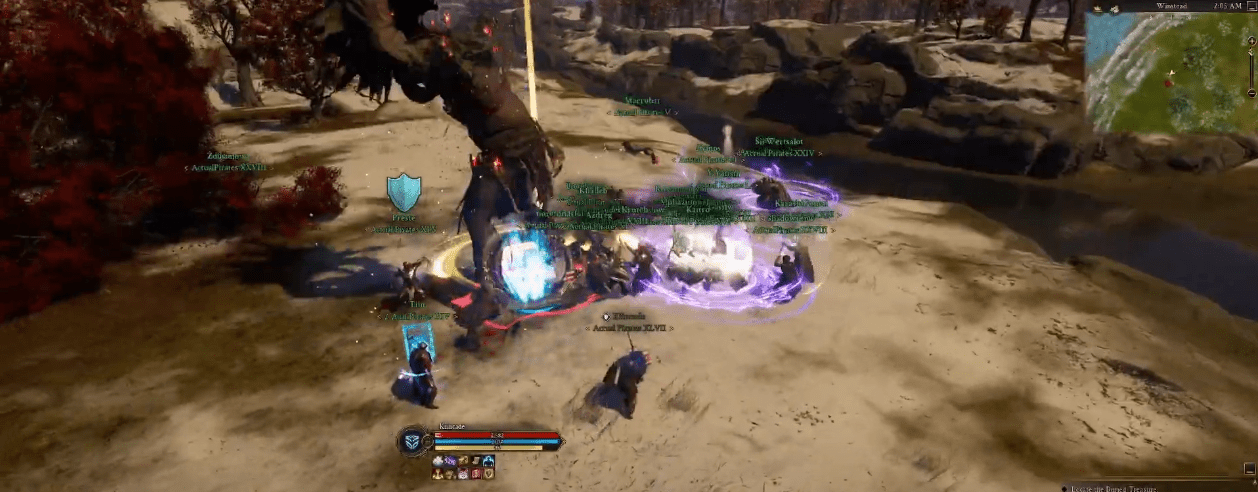
While full raid mechanics are still being tuned, open-world raid bosses are in testing this phase:
- Bosses are location - and event-based, appearing when nodes reach certain thresholds or when triggered by world events.
- Kill mechanics and loot tables scale based on the region, Node development, and the number of participating players.
- These are fully contested, with PvP enabled in many zones, especially in world boss areas.
Expect legendary items, cosmetic drops, and crafting components as top-tier raid rewards.
Dungeon Scaling Based on Node States
One of Ashes’ core innovations is scaling content tied to the Node System:
- Dungeons evolve as their associated Nodes grow.
- New enemies, puzzles, and loot tables unlock at higher Node stages.
- Some bosses or wings within a dungeon are only available if the Node hits a required level or alignment (e.g., a Military vs. Divine node may offer different content in the same location).
This means revisiting the same area at different points in the server’s life can offer entirely different gameplay, loot, and danger.
PvP Mechanics

Ashes of Creation’s PvP is open-world first, structured second. The world is a contested space, and Phase 3 of Alpha-2 brings major expansions to the flagging system, bounty hunting, and organized PvP modes. If you’re looking for conflict, you’ll find it—or start it.
PvP Flagging & Corruption
Ashes uses a three-state PvP flagging system:
- Green (Non-Combatant) – Default state. You’re not flagged unless you attack another player.
- Purple (Combatant) – You flag up by attacking another player or entering certain PvP events.
- Red (Corrupt) – Killing a non-flagged player makes you Corrupt. Corruption stacks, reduces your effectiveness, and increases the odds your gear drops on death.
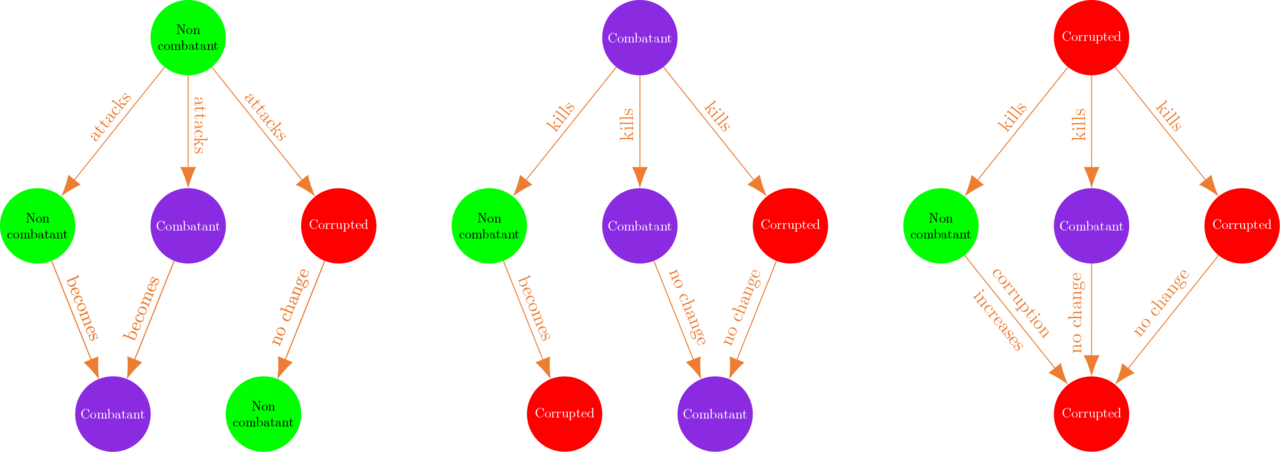
Flagging allows for consensual PvP, while Corruption penalizes gankers. Killing a Combatant doesn’t trigger Corruption—only killing a Non-Combatant does.
Phase 3 introduces deeper Corruption mechanics, including:
- Combat penalties: Reduced damage and defense while Corrupt.
- Gear drop chance: The more Corrupt you are, the higher the risk of losing equipped items.
- XP debt and stat decay: Dying while Corrupt comes with harsher consequences.
Bounty Hunters
Players can opt into the Bounty Hunter system—a legal way to hunt down Corrupt players. Bounty Hunters gain access to:
- Tracking abilities for locating nearby Corrupt players.
- Leaderboards for top hunters.
- Unique rewards and currency for successful kills.
Bounty Hunting is opt-in and only available to players who complete a dedicated progression path.
Structured PvP: Arenas, Guild Wars, Node Wars, Castle Sieges
While open-world PvP is core, structured PvP gives players ways to compete in more organized formats:
- Arenas: 1v1, 2v2, 3v3, and larger. These are instanced and rated, with MMR matchmaking and seasonal rewards.
- Guild Wars: Declare war on another guild and rack up kills to win. These can be informal or part of a broader Alliance conflict.
- Node Wars: Conflict between neighboring Nodes, often driven by resources or political control. These can scale up to hundreds of players.
- Castle Sieges: Endgame, large-scale battles for control of one of the five Castles in Verra. These are now fully testable in Phase 3, with working siege mechanics and victory conditions.
As always, PvP is the activity for high level players. As per tradition with similar MMO games, low-level PvP will be almost non-existent.
PvP Seasons and Leaderboards
Ranked PvP is now seasonal, with progression and rewards across:
- Arenas
- Bounty Hunting
- Node Wars
- Guild vs Guild K/D ratios
Leaderboards will be accessible both in-game and on the web, with unique titles, mounts, and cosmetics awarded at the end of each season. PvP Seasons are expected to last ~6 weeks during Alpha.
Instanced Siege Objectives
While most sieges are open-world, instanced objectives are being tested in Phase 3 for better performance and fairness:
- Key objectives (e.g., relics, wardstones) may trigger instanced mini-battles during a siege.
- These help prevent zergs and ensure performance during peak battles.
- Winning or losing these sub-objectives can dramatically alter the siege outcome.
These are experimental and may evolve based on testing feedback.
Naval PvP (Late Phase)
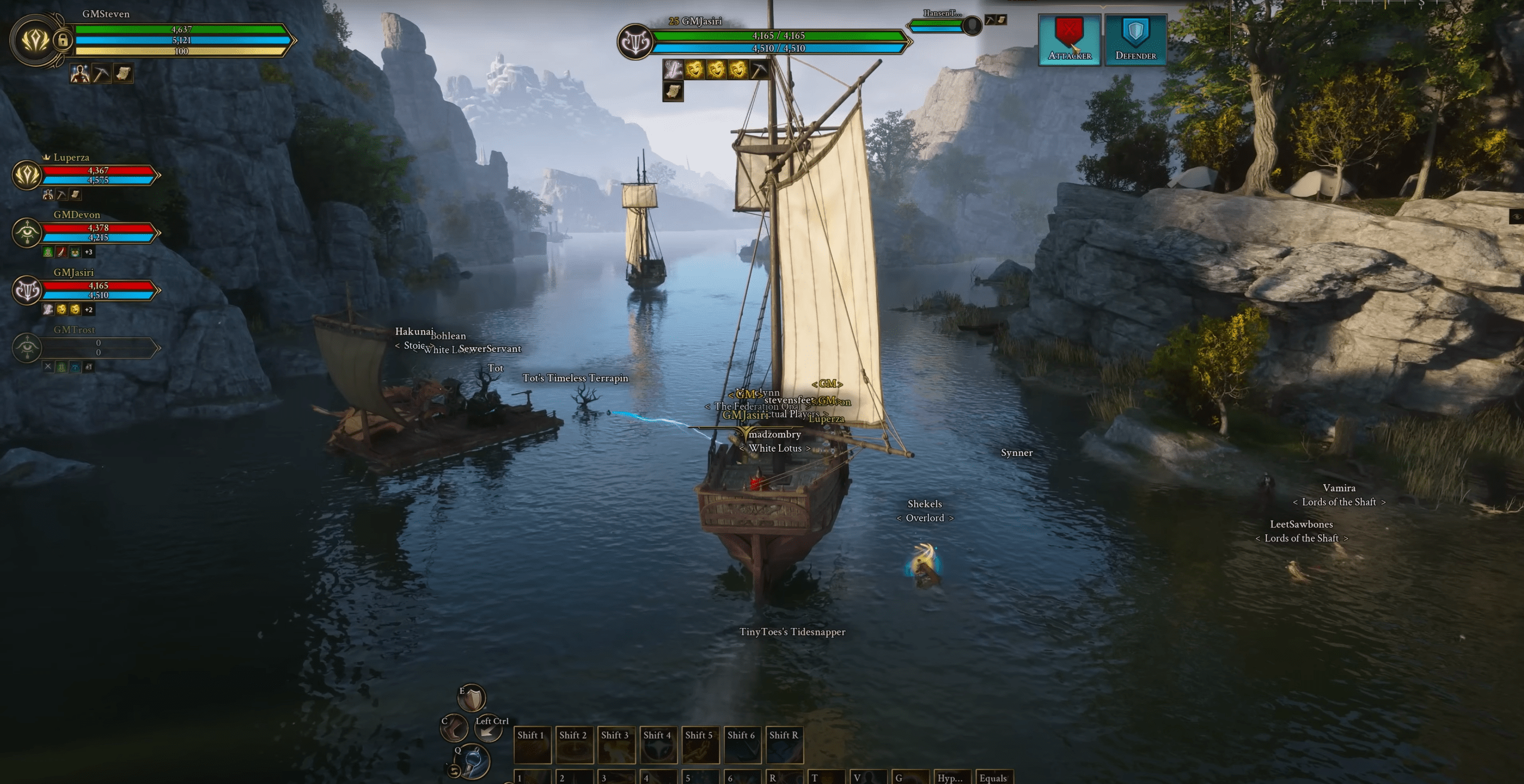
Naval PvP content is not fully online in Phase 3 but is being prepared for late Alpha-2. This will include:
- Ship vs. ship combat
- Naval corruption mechanics
- Open sea PvP rules (International Waters)
Players can expect boarding mechanics, cannon loadouts, and sea-based objectives to become testable in the future.
Castles & Sieges
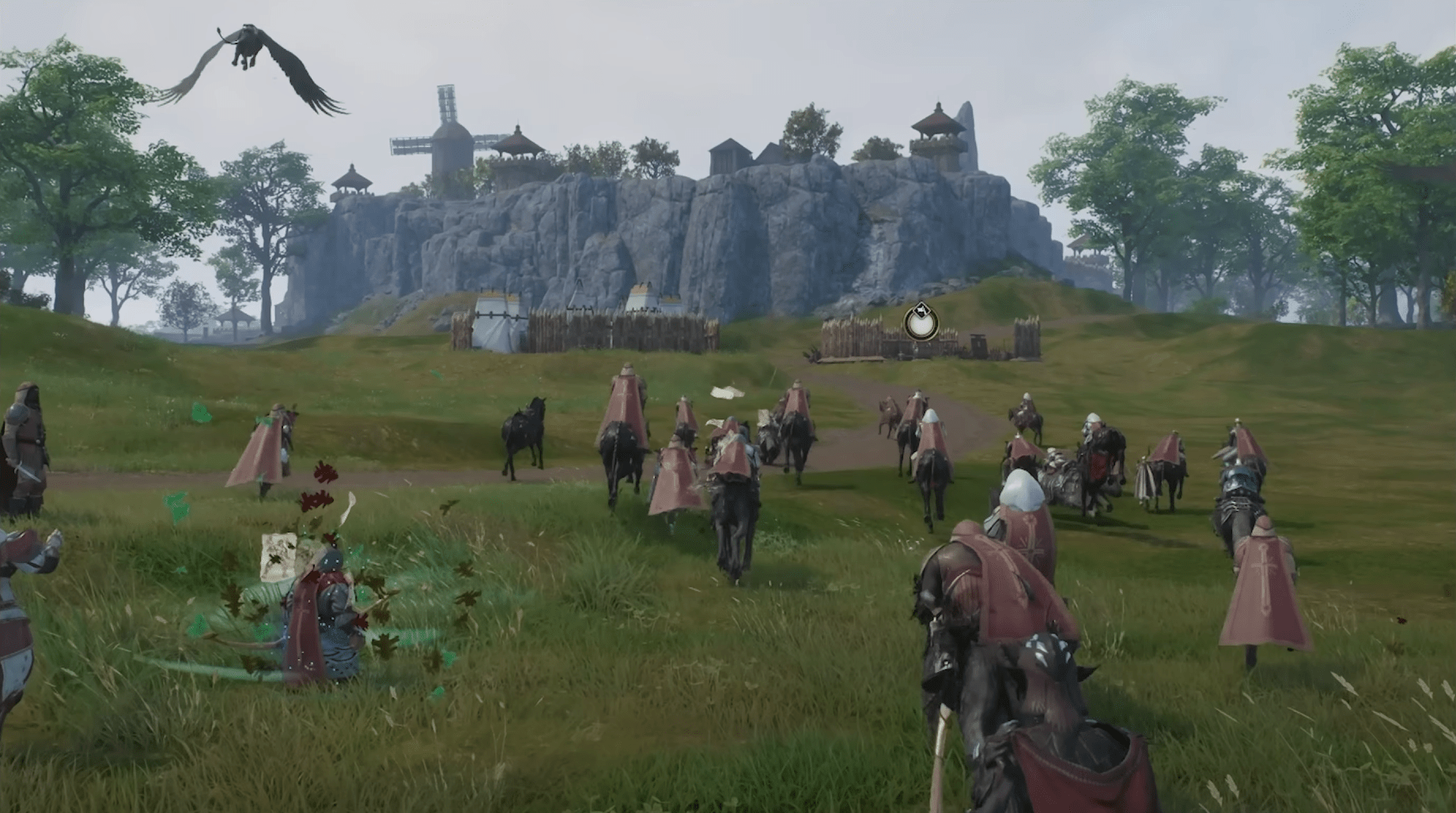
The Castle system is one of the highest-stakes PvP and political features in Ashes of Creation, and in Alpha-2 Phase 3, it’s fully testable for the first time. With five Castles in Verra, each one represents not just prestige—but real power over the surrounding world.
Castle Siege Mechanics (Functional for Phase 3)
Castle Sieges are massive, scheduled PvP battles fought every 4 weeks to determine the ruling guild of each region. In Phase 3:
- Attackers and Defenders fight over multiple objectives (control points, relics, gates).
- Pre-siege objectives in the surrounding region can weaken defenses or strengthen attacking forces.
- Each Castle has unique architecture, siege tools, and chokepoints.
- Siege mechanics now include instanced sub-objectives, allowing cleaner performance and fairer fights.
Victory goes to the side that completes all objectives or wipes the defenders by the timer’s end.
Garrison Nodes
Each Castle controls several Garrison Nodes in its region—these function like smaller versions of normal Nodes:
- Can be leveled and improved by the ruling guild.
- Provide regional buffs, trade access, or unique military advantages during sieges.
- Can be contested, captured, or sabotaged prior to the siege.
These Garrison Nodes act as strategic strongholds in the lead-up to a Castle siege.
Monarch Mechanics
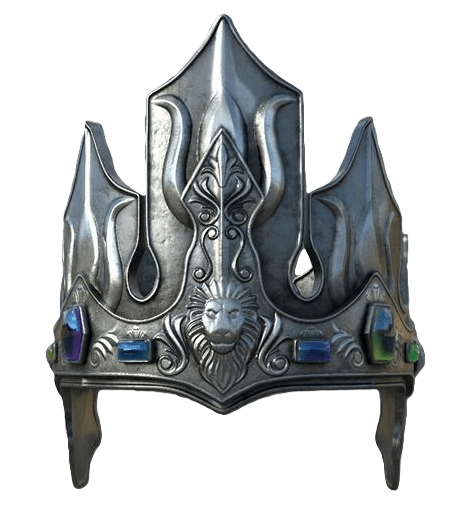 Whoever leads the guild that controls a Castle becomes the Monarch of that region:
Whoever leads the guild that controls a Castle becomes the Monarch of that region:
- Gains access to unique titles, resources, and tax control over the entire regional economy.
- Can set policies, impose regional buffs or penalties, and distribute Castle funds for infrastructure or guild objectives.
- Has partial influence over Garrison Node development and siege defenses.
- Must maintain power through both diplomacy and strength—because the next siege is always on the horizon.
Being Monarch is lucrative—but it paints a giant target on your back.
Interaction with Surrounding Node Regions
Castle control affects all Nodes in the surrounding region:
- Monarchs can tax all Nodes in their domain.
- Nodes within the Castle region gain access to unique goods, services, or questlines.
- Node Mayors may ally or resist the Monarch’s influence, creating political conflict outside of sieges.
- Castle ownership can directly impact trade routes, resource access, and Node wars in the region.
Castles aren’t just about PvP—they’re a political endgame that echoes through the entire world.
Conclusion
Ashes of Creation is not just another MMORPG—it’s a living, evolving sandbox where player decisions shape everything from cities to storylines. With Alpha-2 Phase 3, the game hits a major milestone: introducing full siege mechanics, unlocking vast new regions of Verra, and expanding the systems that make the world feel reactive and alive.
Whether you're a guild leader planning your next conquest, a crafter chasing legendary gear, or an explorer seeking out dynamic world events, Phase 3 delivers a deeper and more interconnected experience. Every system—Nodes, PvE, PvP, economy, governance—feeds into the next, creating a loop of cause and effect that makes Verra feel truly alive.
This isn’t just testing anymore. It’s the foundation of a world that will one day be filled with thousands of stories—most of them written by the players.
F.A.Q.
Is Ashes of Creation Free to Play?
No, you have to buy access to Alpha. Plus, on release the game will have a subscription.
When does Alpha 2 Phase 3 start in Ashes of Creation?
Alpha-2 Phase 3 is scheduled to begin on May 1, 2025 and will last until the release of the Beta version.
Will there be a wipe in Ashes of Creation?
Yes, all server realms will be wiped prior to the official live launch and in between major test phases like Alpha 1, Alpha 2, Beta, etc.
Is Ashes of Creation PvE oriented?
Ashes of Creation is both PvE and PvP game that has activities and systems in place for these two types of content.
Can I play Ashes of Creation now?
Yes, you need to purchase access to the current testing phase to get into the game. But at some point, there will be a wipe and your progress will be lost. Also, be mindful of a quality of the game that’s currently in-development.


